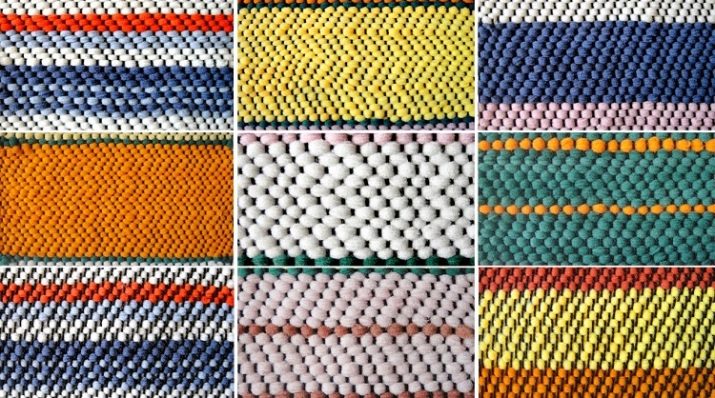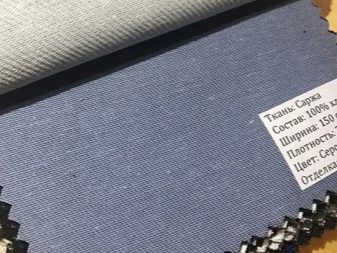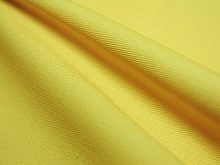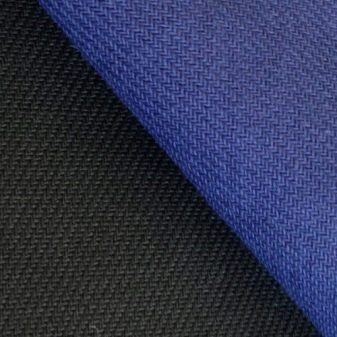What kind of twill is and what is sewn from the fabric?

Twill is a fabric with a special diagonal thread weave. And it is based not only on natural fibers, but also on artificial ones. It is used in many places, but not everyone knows how to properly care for the twill so that the product made of it will last a long time.



What it is?
This material is made thanks to the diagonal weaving of the weft threads. The threads are displaced relative to the warp, and this is how a recognizable diagonal scar is obtained. From dense to thin, from coarse to silky, from elastic to soft - the options for diagonal weaving of fabrics are different. The finished pattern looks like the intersection of large and small stripes, deviating to the left or right, zigzags. But the right direction is probably used more often. The left side is harder to find.

Twill weave is considered to be diagonal, and it gives the material special properties and characteristics. As a result, each fabric gets its own pattern, which will depend on the spacing, thread thickness and its structure. To get twill, cotton, wool and, of course, silk and polyester are used. The thickness of the matter will depend on the threads (their structure and composition). The density of the canvas is in the range from 220 to 360 g / m2.

And if in ordinary, let's say, fabrics the fusion of the weft and the warp is constant, then in the twill the weft will shift. The difference in the order of displacement will determine the quality and density of the fabric. The more the weft moves, the stronger the material will be. And the fabric with a slight offset of the weft will be thin, with a small rib. There is such a concept "rapport", it is defined as a numerical indicator of the amount of displacement of the weft threads. And the indicator is written as a fraction, where the warp threads are the numerator, and the weft threads are the denominator.
So, if the numerator is higher than the denominator, then the twill is the main one (this means that the warp threads will become the front side). If the numerator is less than the denominator, the obverse will be weft. The warp threads are always strong, but the weft threads are loose.


What are the main advantages of twill:
- the strength of the fabric;
- availability;
- wear resistance;
- the ability to absorb and evaporate moisture;
- dominance of natural fibers in the composition;
- hypoallergenic;
- low electrification, that is, the clothes will not "spark";
- easy coloring, which means a wide range of colors;
- colors remain bright for a long time;
- unpretentious care;
- fast drying;
- lack of pellets on the surface.
Of the minuses, we can note the tendency of the fabric to shrink, and this will be noticeable at the very first washings. Also, shedding of the material in the work is not excluded. The fabric stretches rather weakly. And so that it is softer, more elastic, synthetics are added to the composition.

History of appearance
If you look for the home of fabric, it will definitely be France. In the three hundredth years of our era, a material was made in Nimes, which for a long time was the basis for working forms. Over time, they worked on it, improved it and began to sew good suits, dresses and sheets too.
The entrepreneurial American Levi Strauss brought true fame to the twill. He took the fabric as the basis of his jeans. Now cotton marque is called denim, and if you decipher this word, you get "from Nimes." The same city where twill was first mentioned. By the way, for a long time, jeans were also just workwear, but now everyone has them.



Species overview
The twill classification is wide enough. Let's consider its varieties in more detail.
By weaving type
The twill weaving method can be called marque and, as already mentioned, diagonal. Fabric by the type of weaving, and also by the fineness and inclination of the thread, it happens:
- classic: in this case, the lines have the same width and slope to the right;
- broken line: this is a small scar with a left slope, the result is a herringbone pattern (plus a thin fabric);
- complex: diagonal stripes vary in width, which increases the density of the fabric;
- reinforced: this is a fabric with a special density and with wide diagonal stripes;
- zigzag: the threads of the weft are guided alternately to the left and right.
But this is not the only variety of twill.



By color
The fabric can be plain or one-colored, as well as printed or patterned, printed or with an ornament, also bleached. Monochromatic twill is more often used as a lining for outerwear, workwear is sewn from it, it is used precisely as a technical material. Only severe species are bleached.



By composition
It can be finely woven cotton fabric. This option is very common. There is also silk fabric, which has the smoothness and shine characteristic of fiber.
Also, according to the composition, twill is:
- woolen;
- 100 percent harsh cotton (four-strand weaving is characteristic of it);
- polyester;
- viscose (used for lining fabric);
- stretch with elastane.



If cotton fabric is good in work clothes, then bed linen, as well as underwear, dressing gowns and so on, are sewn from silk twill. And the material where elastane is used is literally irreplaceable for children's outfits. The lining twill is made with the inclusion of viscose, so that it is not only soft and elastic, but also hygienic. And, of course, it is difficult to find a more durable twill than a harsh one. Synthetic fabrics are often used in interior decoration, curtains, upholstery, etc.
And there is another type of twill - Uzbek. This is the material that is made from 100% natural Uzbek cotton. Once upon a time, back in the Soviet years, jeans were made from it, so that they were no worse than imported ones. But still it turned out a little worse, because the fibers of the Uzbek twill were not as long as the fibers of denim.But in workwear, this material has been used much more successfully.


Areas of use
Twill fabrics are used literally everywhere. There is probably no person who would not be familiar with this type of textile. And since now the twill weaving has also been modernized, the scope of use of the material has expanded significantly. Workwear and jeans are just one part of the garments for which twill is optimal. Suits, trousers, dresses and coats are actively sewn from it. For both sexes and almost all ages.
Natural fabrics are hygroscopic, which is very much appreciated for work clothes, because sweat and heat must be removed relatively quickly and comfortably. The worker, on the other hand, will not waste time changing clothes. And the absence of static electricity makes it possible to use fabric where production becomes dangerous.

Let's take a closer look at what can be sewn from twill.
- Overalls for oil workers, miners, security officials. High-quality and strong work gloves, aprons, bags and sacks come out of the fabric.
- And cotton linen material, which has a special water-repellent impregnation, is perfect for upholstering furniture and mattresses.
- A thin, silky twill is used to make the lining material. Usually viscose is present in the composition.
- A coarse and stiff twill will definitely find a place in the creation of transport and securing belts. Also, grinding cloths and various items of technical functionality are made from such matter.
- Twill underwear is also made, and very comfortable. It promises a long wear.
- Many options for uniforms for doctors, sellers, workers of chemical laboratories are made from cotton twill.
- Excellent summer dresses and sundresses, blouses can be sewn from fabrics with cotton and elastane.
- Suits and trousers, jackets and skirts, which can also be worn for a long time, are sewn from woolen and semi-woolen twill.
- Bed linen is a good option for those who like to sleep comfortably and hope that the linen will last a long time.
- They buy curtains and tablecloths made of twill well, because they look aesthetically pleasing and are quite practical in everyday life.
- Headwear made of diagonal fabric is also made, like demi-season jackets, raincoats.
In a word, it’s probably easier to list where the fabric is not used. In the description of the areas of application, something new appears every year.

Care rules
Washing twill fabrics usually does not cause problems, but the regime must be taken into account and not experimented. For example, on a delicate cycle, they wash those fabrics that contain silk, wool, or a synthetic component. This means that the temperature indicator during washing should not exceed 40 degrees. But cotton overalls can be washed at 60 degrees. Medical suits will also withstand higher temperatures (for example, “baby's clothes” mode), but the wash should not be intense or very long.
Let's see what else you need to know about caring for twill fabric.
- This material is low-crease. Most of its species do not need to be ironed at all. But if the fabric contains silk and viscose, and it is necessary to iron it, then only on the “silk” mode.
- If it is a cotton or linen fabric, the ironing temperature can rise up to 80 degrees.
- If you use the "quick spin" function, then only for harsh fabrics. It can injure other types.
- Cleaning can be of any kind. If a greasy stain has formed on the lining fabric of a coat or hat, for example, you can remove it with a swab soaked in alcohol.
- But it is better not to take bleaches, as well as compositions containing chlorine. Just like powders with bleaching granules are not used: this is too harsh for twill.
- Antimicrobial, disinfectant compounds can be used to treat fabric.
- First of all, you need to study the label on the product.
- The density of the twill allows the material to retain its original appearance for a long time. Even if you have to iron the products, doing it often, they will still not lose their original appearance for a long time.
Such material as twill is very interesting: both natural types, and artificial, and combinations. In addition to properties that indicate the practicality of the material, it is also an aesthetically pleasing fabric (in most cases), which also inclines many to choose it in the case of an alternative.










